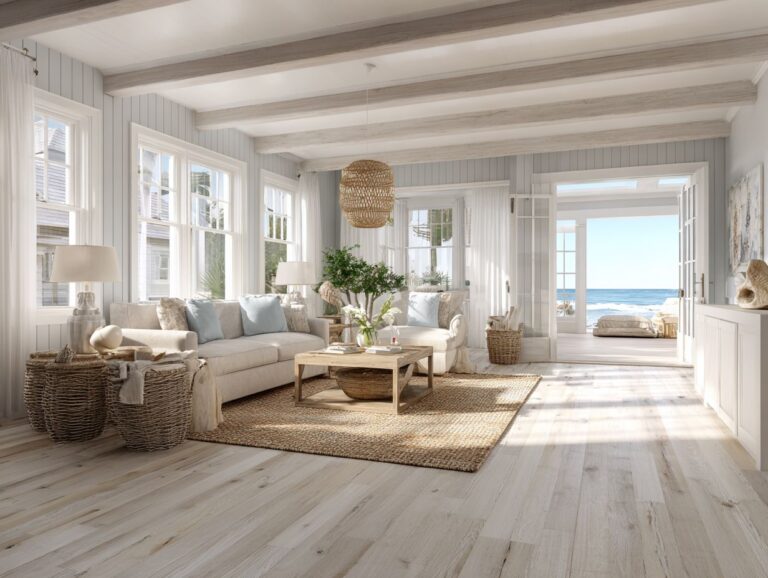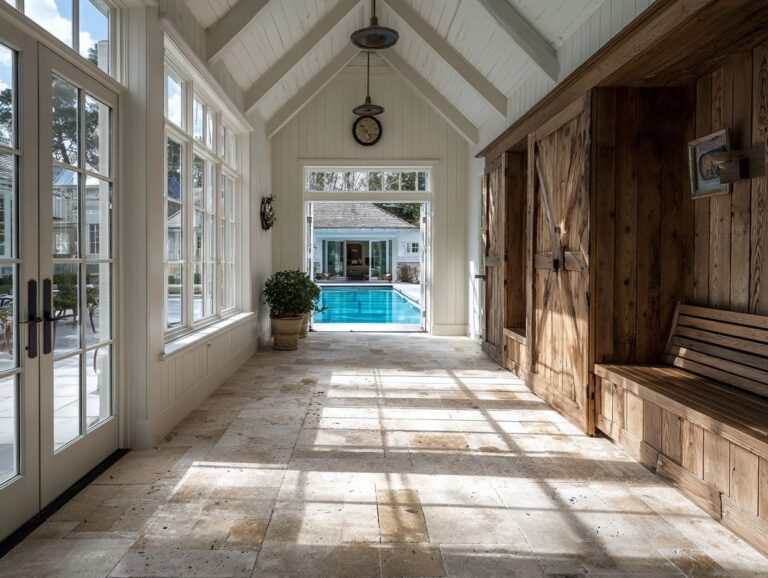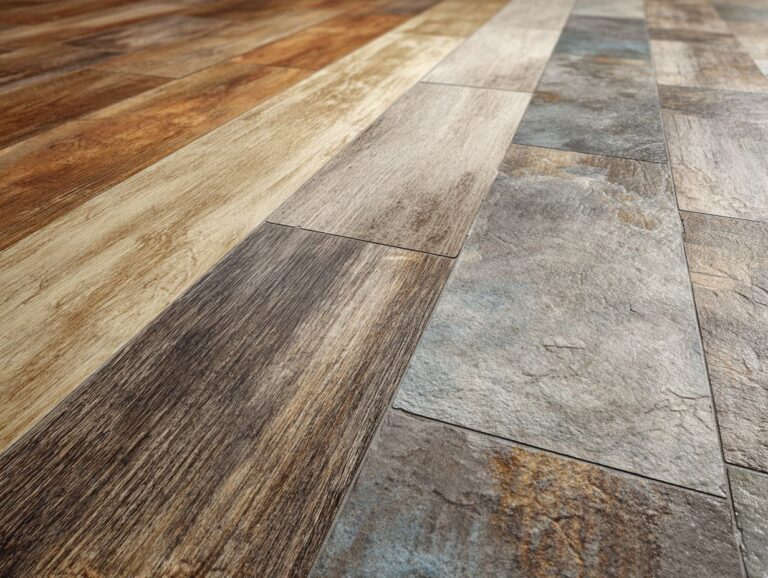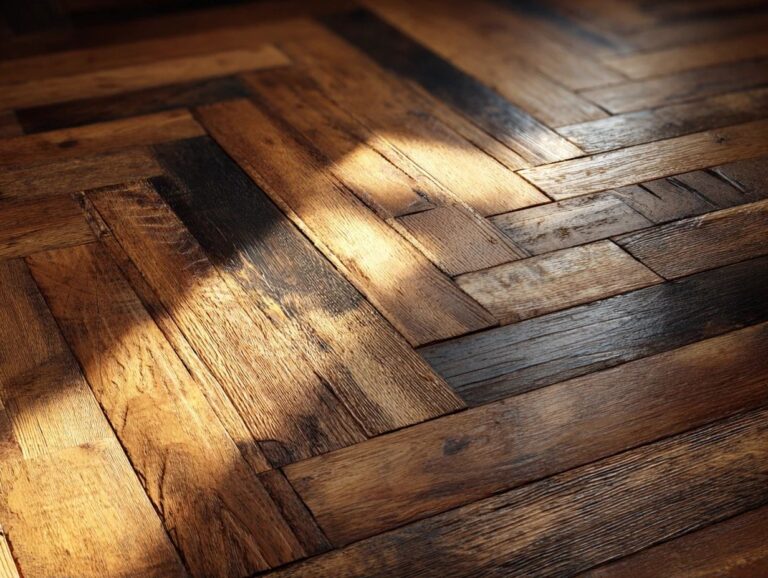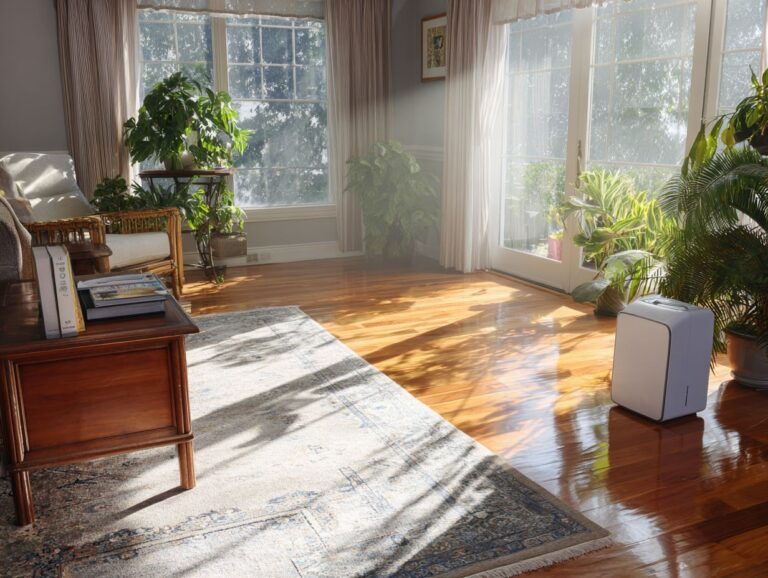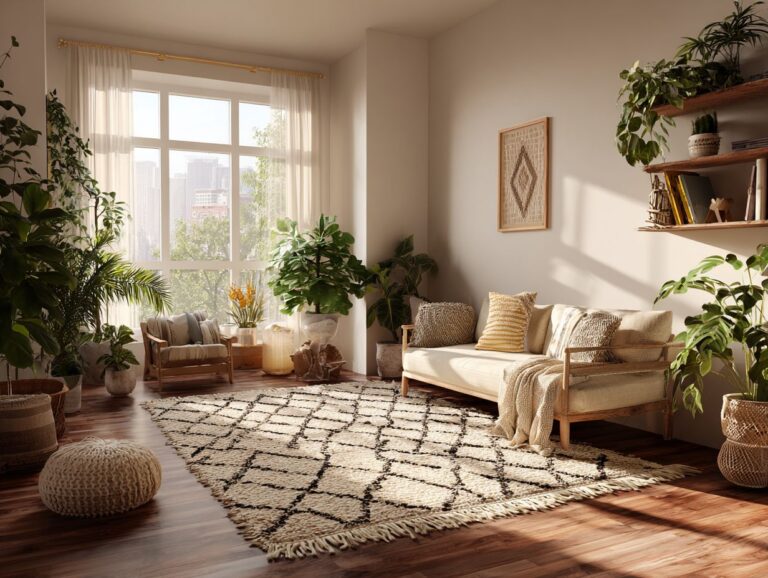Industrial Style Flooring – Raw and Refined
Contents
- Introduction to Industrial Style Flooring
- Types of Industrial Flooring
- Raw Industrial Flooring
- Refined Industrial Flooring
- Installation Considerations
- Maintenance and Care
- Industrial and Commercial Flooring Market Data
- Frequently Asked Questions
- What is Industrial Style Flooring?
- What materials are commonly used for Industrial Style Flooring?
- What are the benefits of choosing Industrial Style Flooring?
- Can Industrial Style Flooring be used in residential spaces?
- What is the difference between Raw and Refined Industrial Style Flooring?
- Is Industrial Style Flooring suitable for high traffic areas?
Introduction to Industrial Style Flooring
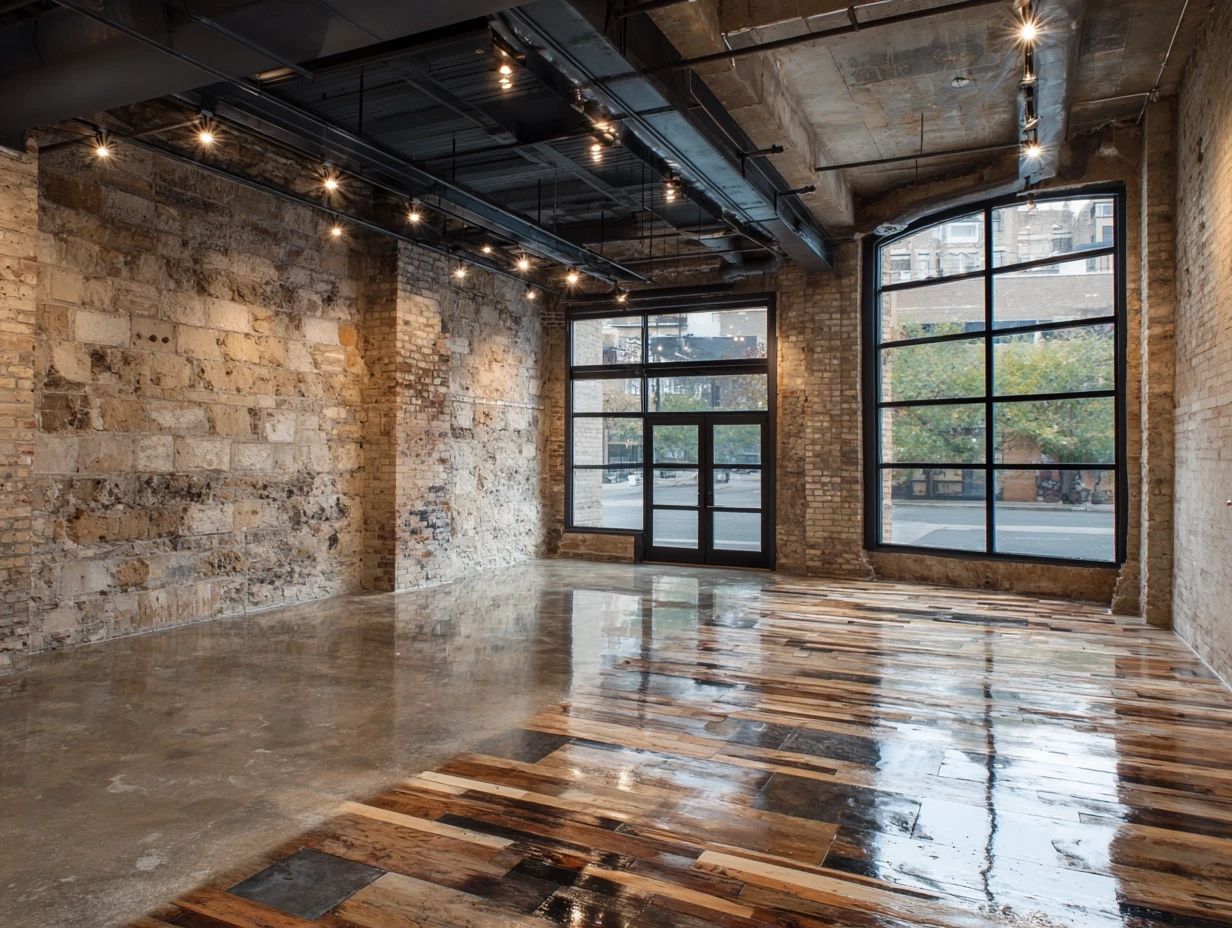
Key Takeaways:
Definition and Characteristics
Industrial style flooring is characterized by exposed structures, large windows, and a neutral color palette that emphasizes simplicity and function.
This flooring often uses polished concrete, which is durable and easy to maintain, making it ideal for warehouses and loft-style apartments.
A New York loft could have high ceilings with exposed beams, combining the structure of the building with sleek, modern surfaces. Incorporating soft textiles like area rugs can soften the look, adding warmth without compromising the industrial aesthetic.
Utilizing a mix of these features, anyone can create a spacious, inviting environment while showcasing the raw beauty of industrial design.
Historical Context
The industrial design movement began in the late 1800s and has grown to greatly shape contemporary building styles.
This evolution is evident in iconic structures like New York’s One World Trade Center, where the raw, exposed materials reflect industrial roots.
The flooring choices, such as polished concrete and reclaimed wood, emphasize functionality while adding warmth.
Similarly, the Tate Modern in London showcases original factory elements, merging them with contemporary design.
These buildings show how city growth has adopted industrial looks, changing old industrial areas into lively cultural centers, where traces of their past are used as a base for new design ideas.
Types of Industrial Flooring
There are different kinds of industrial flooring to match various design tastes, whether you like a rough and natural look or a smooth and polished style.
Concrete Flooring
Concrete flooring stands out in industrial design for its unmatched durability and versatility, being ideal for both residential and commercial spaces.
Its design allows you to select various finishes, such as polished or stained surfaces, making it suitable for trendy cafes and modern lofts.
For instance, a local coffee shop might use a sleek, polished concrete floor to create a contemporary yet warm environment.
To keep it clean, just sweep often and wipe with a damp mop using a pH-neutral cleaner. Applying a sealant every few years makes the floor stronger and keeps it looking good, ensuring it stays in good condition for high-traffic areas.
Wood Flooring
Wood floors make industrial areas feel cozy and inviting. Using reclaimed wood is an environmentally friendly option that gives a rustic look.
Reclaimed wood planks can vary significantly in finish, influencing the overall ambiance of a room.
For a more modern look, a sleek matte finish can offer a sophisticated contrast to raw industrial elements like steel and concrete. In contrast, a distressed finish can emphasize the wood’s history, creating a time-worn charm that complements vintage decor.
Experimenting with stains such as dark walnut deepens the wood’s character, enhancing its natural grain. Incorporating a variety of finishes can help achieve a unique and cohesive design that celebrates sustainability.
Metal Flooring
Metal flooring options, such as Corten steel, introduce rugged charm and industrial features that can serve as statement pieces in any design.
These flooring types are perfect for art galleries, where their impressive look highlights the displayed artworks and supports a simple design.
Contemporary homes featuring open-concept designs can benefit greatly from metal flooring, reinforcing an industrial chic theme.
Using coatings like polyurethane can improve durability and maintain the finish over time, ensuring they withstand heavy foot traffic.
Choosing metal flooring improves the look and provides a practical surface that’s simple to care for and suitable for many settings.
Vinyl and Laminate Options
Vinyl and laminate flooring provide cost-effective solutions for achieving industrial aesthetics without compromising on style or durability.
When comparing these flooring options in industrial settings, consider their price and durability.
Vinyl flooring usually costs from $2 to $7 per square foot. It is water-resistant and easy to clean, making it suitable for busy places like warehouses.
Laminate flooring costs between $1 and $5 per square foot. It looks like wood but doesn’t handle moisture well, so it’s best used in dry areas.
In residential spaces, laminate is often used for its warmth and aesthetic appeal, while vinyl shines in commercial spaces that require resilience and easy cleaning.
Raw Industrial Flooring
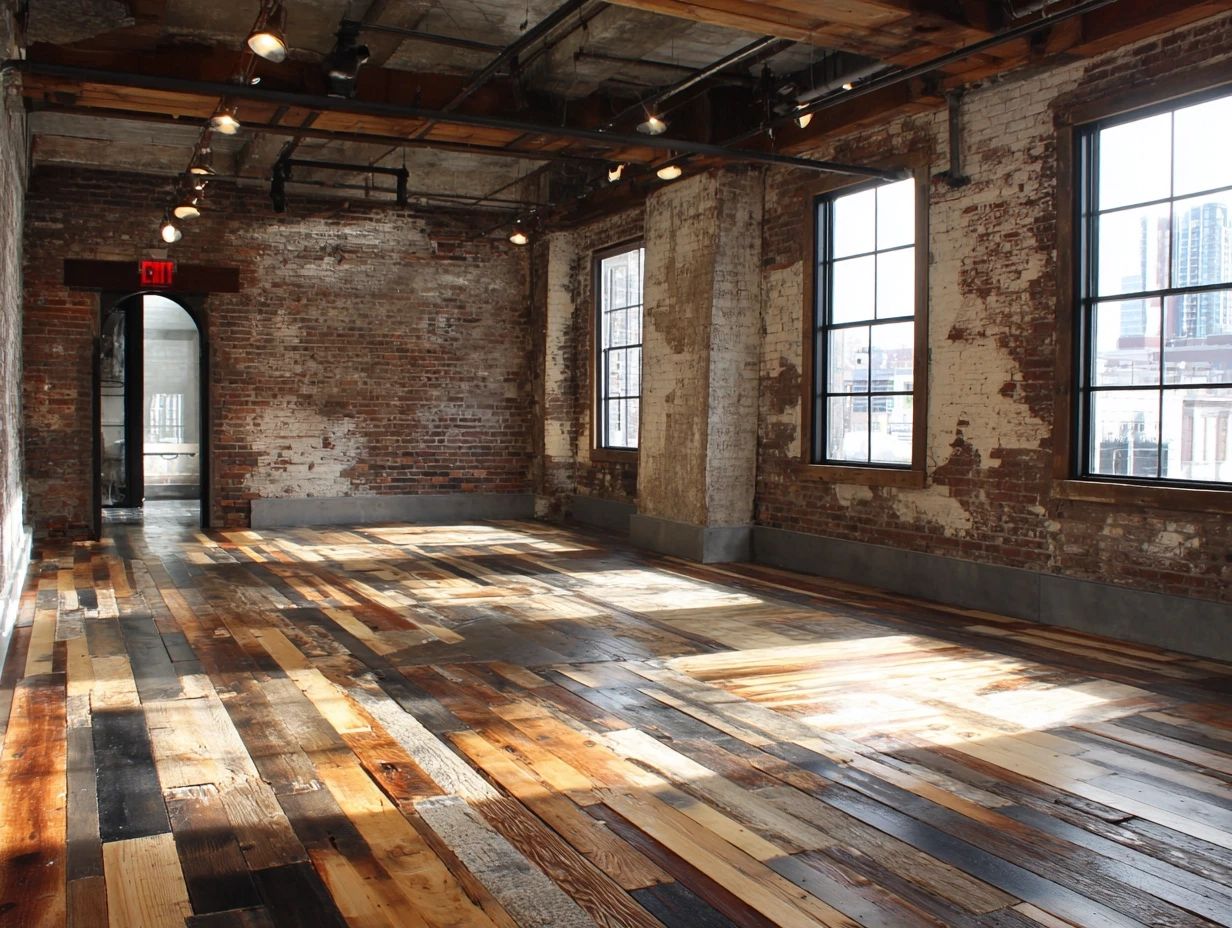
Industrial flooring made from basic materials stands out and makes a strong impact in spaces intended for creativity and innovation.
Unfinished Concrete
Concrete floors without any finish create a basic appearance and offer an authentic industrial vibe that improves any space.
To improve this look, try combining the concrete with softer decorations like soft area rugs or wooden furniture.
To install, clean the surface thoroughly and make sure it is even, then apply a sealant to prevent stains.
Incorporating greenery-such as potted plants or hanging vines-can add warmth and life to the starkness of unfinished concrete.
This combination creates a balanced environment, blending the rugged beauty of concrete with inviting, natural touches that soften its industrial edge.
Reclaimed Wood
Reclaimed wood adds warmth and a historical touch to floors, offering a sustainable option for interior design.
To find reclaimed wood, check out local salvage yards, browse online sites such as Craigslist or Facebook Marketplace, and visit stores that specialize in sustainable building materials.
Look for items like barn wood, deconstructed furniture, or repurposed pallets, all adding unique character to your space.
For furniture, consider using reclaimed wood in:
- Coffee tables
- Dining sets
- Shelving units
These items are visually striking and share a narrative, adding both elegance and environmental friendliness to your home’s feel.
Rustic Metal Elements
Incorporating rustic metal elements in flooring choices can create striking visual appeal while enhancing the overall industrial aesthetic.
This material pairs beautifully with hardwood, stone, or concrete for a balanced look.
For instance, a loft-style living room can feature reclaimed wood floors accented with metal inlays, providing a warm yet edgy vibe. Similarly, a modern kitchen may combine a polished concrete floor with rusty metal accents on cabinetry, achieving an industrial charm.
To achieve these looks, consider using decorative metal strips or tiles, which can be sourced from local artisans or home improvement stores, allowing for customized designs that reflect personal style.
Refined Industrial Flooring
Industrial flooring transitions from unfinished to smooth, providing advanced choices that meet contemporary preferences.
Polished Concrete
Polished concrete is appreciated for its sleek look and durability, making it a common choice in upscale industrial designs.
This flooring option offers low maintenance and various design aesthetics, from matte to high-gloss finishes.
For example, the iconic Ace Hotel in Portland showcases polished concrete’s versatility, combining it with vintage furnishings for a stylish atmosphere.
To keep your polished concrete in good condition, sweep and damp mop regularly to prevent scratches. Apply a protective sealer every few years to extend its lifespan.
Using colorful aggregates or decorative stains can change standard concrete into a distinctive art piece that fits modern decor.
Engineered Wood
Engineered wood flooring provides the appearance of real wood and is more durable, making it suitable for various industrial environments.
The several layers offer improved protection from moisture and temperature shifts, making it ideal for basements and kitchens.
For example, using engineered wood in busy areas like commercial offices offers long-lasting strength and looks good too.
Products like Shaw Floors or Mohawk’s SmartStrand can help keep the flooring strong and attractive over time.
Engineered wood works well for homes and small businesses.
Decorative Metal Finishes
Decorative metal finishes are important in industrial design, providing both visual attractiveness and practical advantages in different uses.
They can improve flooring options by giving them texture and depth. For instance, consider how polished aluminum tiles reflect light, creating an illusion of space in smaller rooms.
Alternatively, rich bronze finishes blend beautifully with wooden elements, providing a warm contrast. In recent design trends, combining metals like brass or copper with ceramics brings visual interest while maintaining practicality.
Use these finishes strategically to tie flooring into an overall design theme, ensuring cohesive integration with furnishings and wall treatments for a sophisticated look.
Installation Considerations
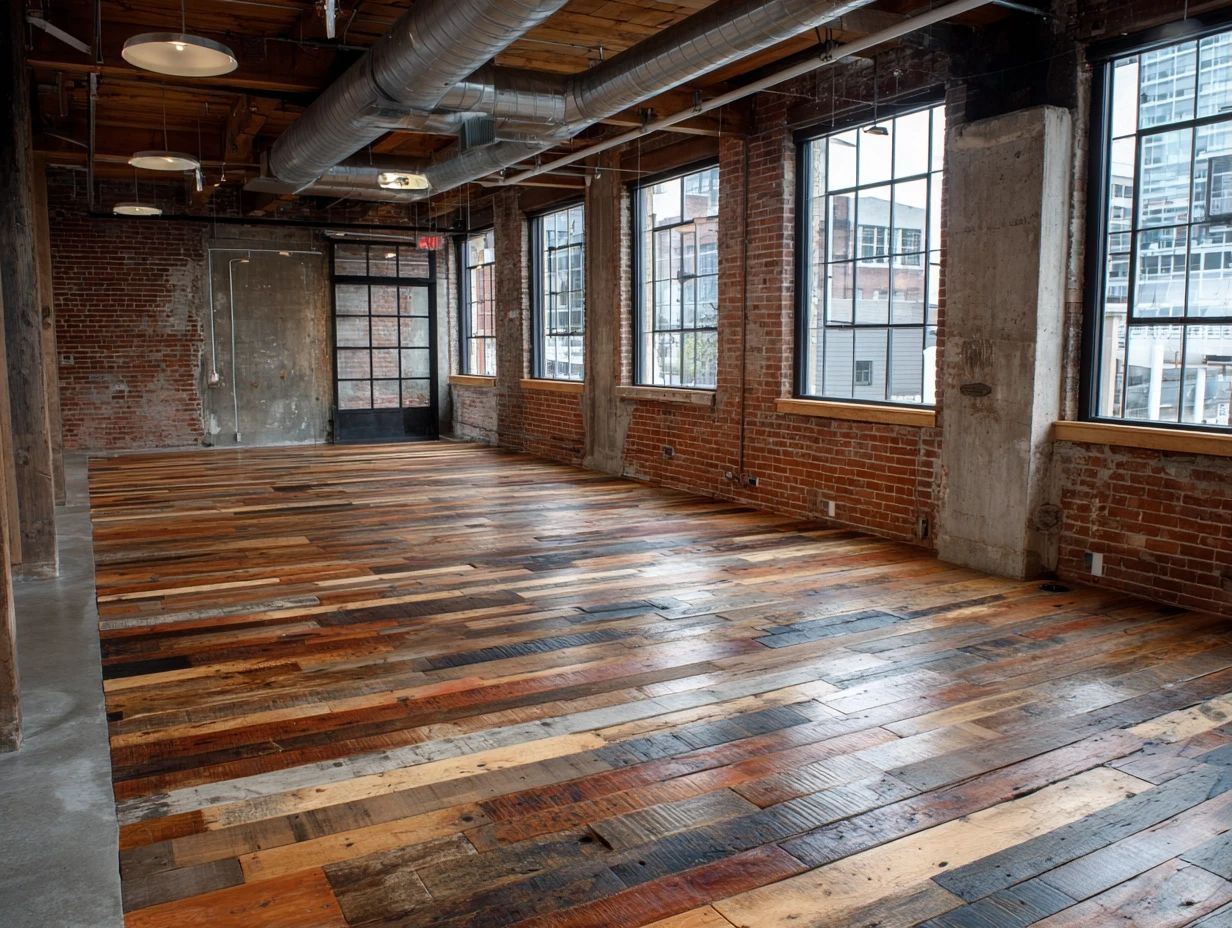
Proper installation is essential for maximizing the benefits of industrial flooring. It requires careful planning and specific actions.
Subfloor Preparation
Adequate subfloor preparation forms the foundation for successful flooring installation, influencing longevity and aesthetic outcome.
To prepare your subfloor effectively, start by cleaning it thoroughly to remove dust and debris.
Use a leveling compound, such as Ardex K 15, to fix low areas-make sure it is mixed and used correctly.
Use a moisture meter to check moisture levels and prevent mold. Aim for levels below 12%.
A common pitfall is neglecting to address squeaky floors; reinforce them with screws if needed.
Spending around $100 on tools and materials can greatly improve how long your flooring lasts and how well it works.
Choosing the Right Materials
Picking the right materials for industrial flooring is important to get the look and performance you want.
-
Begin by evaluating the specific needs of your project. Consider durability-materials like epoxy resin are strong and withstand damage and chemicals, making them ideal for high-traffic areas.
-
For designs that emphasize sustainability, look into bamboo or reclaimed wood, which offer both aesthetics and eco-friendliness.
-
Assess installation requirements: interlocking tiles can save time and labor costs. Factor in maintenance; polished concrete is low-maintenance, while carpet tiles may require more frequent cleaning.
-
Knowing these details will help you choose the right option for your flooring project.
Professional vs. DIY Installation
Deciding between professional installation and DIY depends on budget, skill level, and project complexity.
For a DIY approach, consider projects like installing ceiling fans or repainting rooms, which typically cost under $200 and require minimal tools.
Online platforms like YouTube provide tutorials that can guide you through each step, reducing the learning curve.
Conversely, hiring professionals may cost between $500 to $2,000 depending on the job’s intricacy. This method guarantees efficiency and quality, especially for difficult tasks like electrical work or plumbing.
Weigh the time commitment of DIY-often 10-15 hours-for simpler projects against the convenience of expert help.
Maintenance and Care
Regular maintenance of industrial flooring extends its lifespan, ensuring it remains visually appealing and functional.
Cleaning Techniques
Good cleaning methods are essential to keep industrial floors looking good and in good condition.
Different flooring materials require specific cleaning methods.
- For polished concrete, use a pH-neutral cleaner bi-weekly to prevent dulling.
- Vinyl floors should be cleaned with a damp mop and mild detergent every week to avoid buildup.
- Epoxy floors should be cleaned with a mixture of vinegar and water once a month to keep them shiny.
For eco-friendly solutions, consider products like Simple Green or Bon-Aire, which are tough on grime yet safe for the environment.
Looking after your floor helps it stay attractive and extends its lifespan.
Repairing Damage
Quickly repairing damage to industrial flooring is important to avoid bigger problems and keep it looking good.
Common types of damage include cracks, scratches, and water damage, each requiring specific repair methods.
For minor cracks in concrete, a concrete patching compound can be applied easily.
Scratches on vinyl or laminate may benefit from a specialized repair paste or floor marker.
For serious water damage, experts need to check for hidden moisture issues and possible mold growth.
To keep your floors safe and looking good, check them often and consider hiring a cleaning professional every few years to increase their lifespan.
Future Trends in Industrial Flooring
New trends in industrial flooring focus on sustainability and new materials, changing the way we design interiors.
Materials such as recycled rubber, bamboo, and bio-based composites are gaining traction due to their low environmental impact. Recycled rubber flooring, often made from used tires, is durable and non-slip, making it ideal for areas with heavy foot traffic.
New technology allows flooring systems to monitor environmental conditions. Experts predict that by 2025, eco-friendly materials will be widely used in the market, changing both the look of spaces and how they are designed to work well and be environmentally friendly.
Industrial and Commercial Flooring Market Data
Industrial and Commercial Flooring Market Data
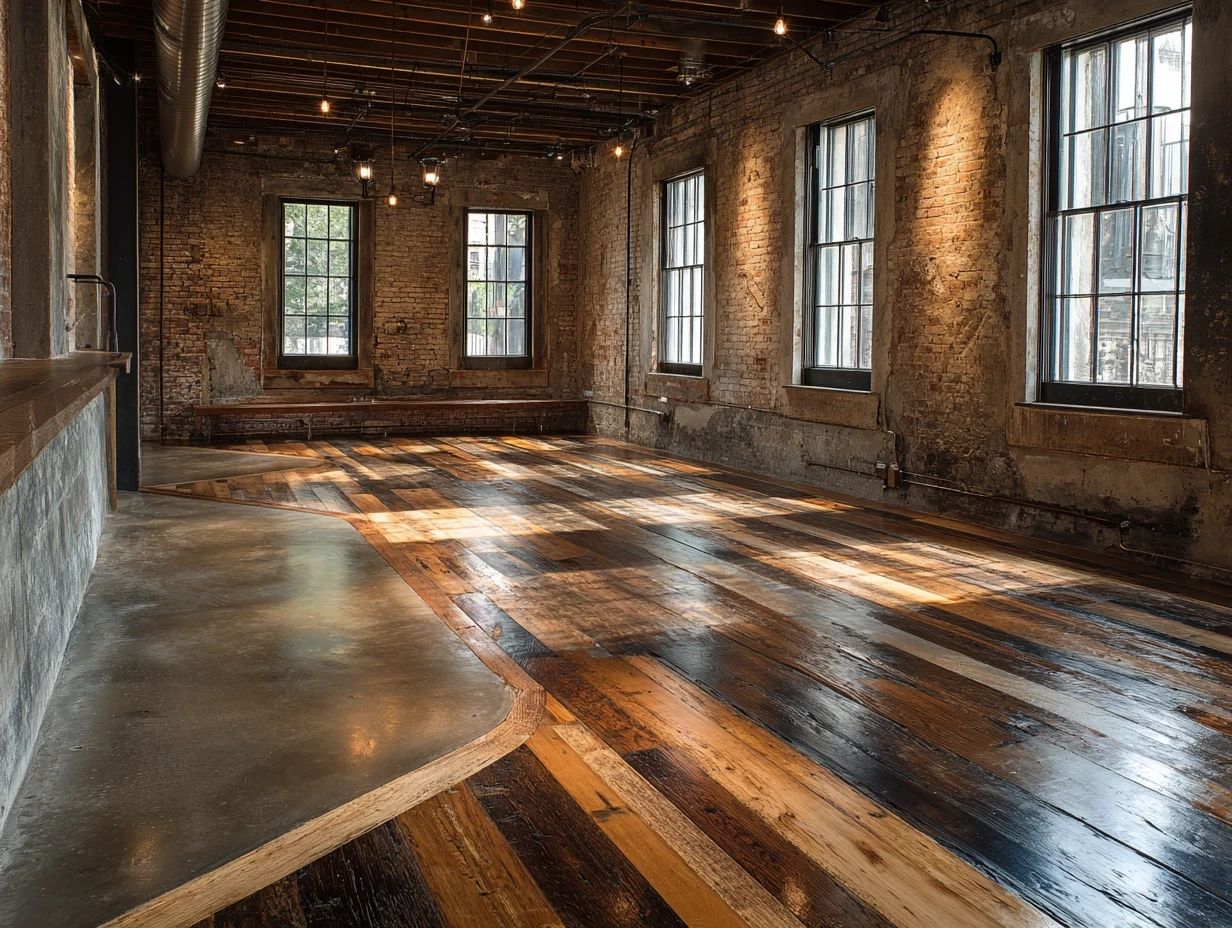
The Industrial and Commercial Flooring Market Data gives information about the present and expected expansion of the flooring market worldwide, highlighting the U.S. commercial area. This information shows the changing patterns, market breakdown, and factors influencing growth that people in the flooring business should know about.
The Global Industrial Flooring Market is expected to grow significantly from a market size of $8.74 billion in 2023 to $14.76 billion by 2033. This growth is driven by a compound annual growth rate (CAGR) of 5.38% over the period. The need for strong and long-lasting flooring in industrial areas is increasing because manufacturers and service providers want floors that can handle heavy machines, lots of people walking, and other work-related challenges.
- The Industrial Flooring Segments show that the Light Duty 300um flooring holds a substantial market share, accounting for 61.9% in 2023. This indicates a strong preference for lighter flooring solutions that offer ease of installation and maintenance, catering to industries needing quick application and efficient turnover.
- Additionally, the Healthcare Segment represents 33.7% of the market share in 2023. The healthcare industry’s need for hygienic, seamless, and easy-to-clean flooring solutions drives this demand, reflecting the sector’s stringent requirements for flooring materials that support infection control and patient safety.
The U.S. Commercial Flooring Market is projected to grow from $14.88 billion in 2024 to $34.34 billion by 2033, with an impressive CAGR of 10.67%. This increase shows a strong demand for high-quality flooring options for businesses, spurred by new building works, upgrades, and an increased attention to the look and use of facilities. The substantial growth rate suggests significant opportunities for flooring companies to innovate and capture market share by meeting diverse customer needs, from aesthetics to durability.
Overall, these statistics show a strong and growing flooring market. This highlights the need for industry participants to stay current with trends, create new products, and meet the specific needs of different industries such as healthcare and general commercial sectors. The focus should be on sustainability, easy installation, and flexible uses to meet the needs of a changing market.
Frequently Asked Questions
What is Industrial Style Flooring?
Industrial Style Flooring is a type of flooring that is inspired by the raw and unfinished look of industrial buildings, such as factories, warehouses, and lofts.
What materials are commonly used for Industrial Style Flooring?
Some commonly used materials for Industrial Style Flooring include concrete, reclaimed wood, metal, and polished cement.
What are the benefits of choosing Industrial Style Flooring?
Industrial Style Flooring provides a unique and modern aesthetic to any space. It is also durable, easy to maintain, and can add value to your property.
Can Industrial Style Flooring be used in residential spaces?
Yes, Industrial Style Flooring can be used in both commercial and residential spaces. It is a popular choice for those who want to add an edgy and industrial touch to their home.
What is the difference between Raw and Refined Industrial Style Flooring?
Raw Industrial Style Flooring focuses on the raw and unfinished look, often showcasing imperfections and natural wear and tear. Refined Industrial Style Flooring is polished and smooth, with fewer noticeable flaws.
Is Industrial Style Flooring suitable for high traffic areas?
Yes, Industrial Style Flooring is a durable option for high traffic areas as it can withstand heavy foot traffic and is resistant to scratches and stains.
